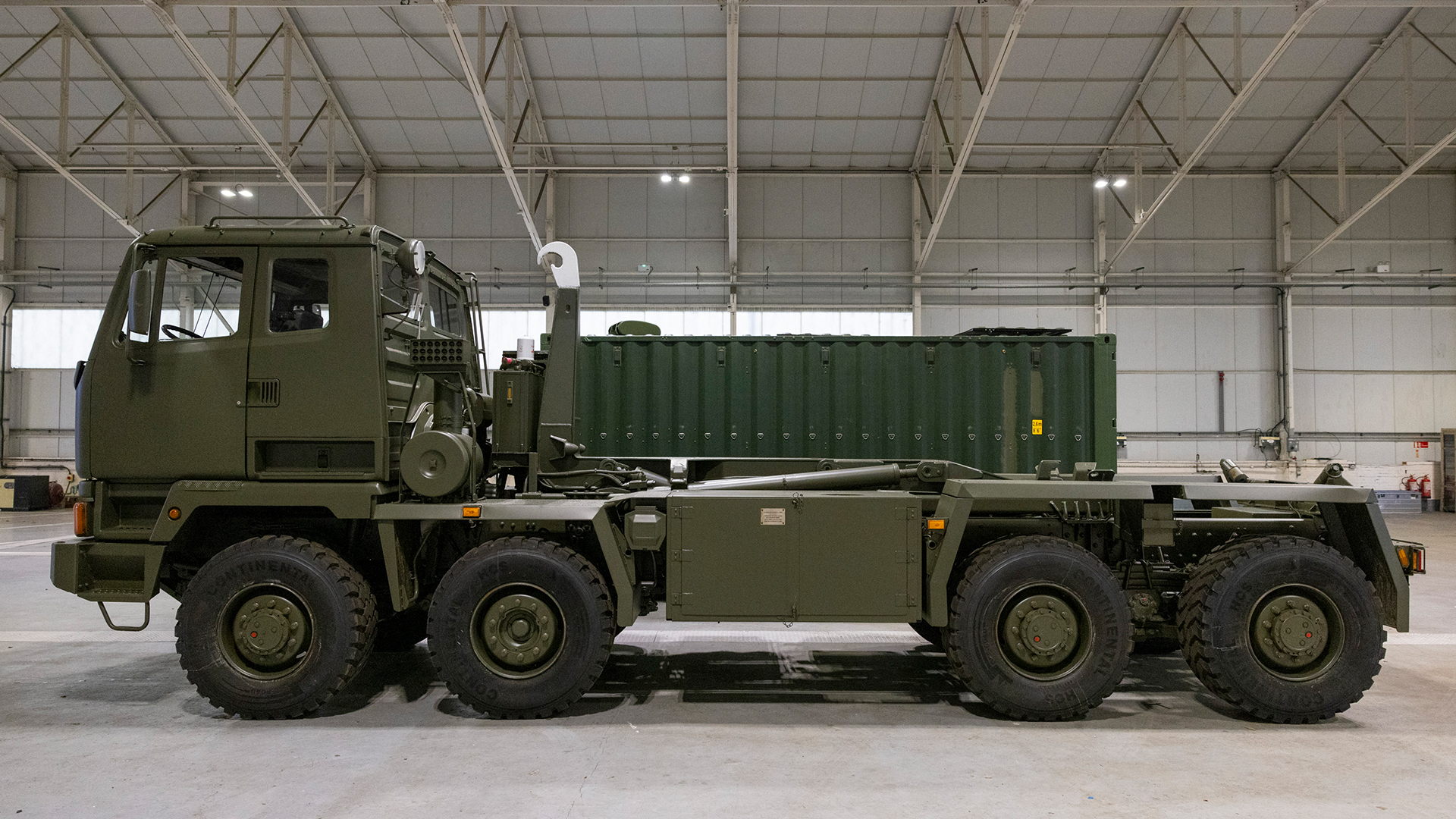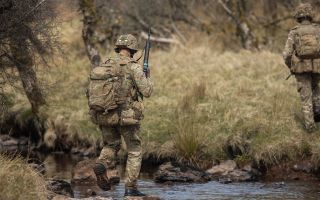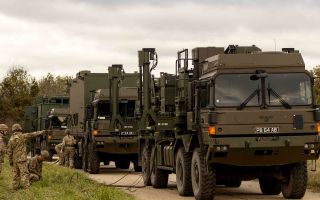British innovation and Soviet-designed missiles help Ukraine take the fight to Russia
A new British-built surface-to-air missile system is being supplied to Ukraine which it's hoped could be a solution to one of Kyiv's biggest problems – a lack of air defence.
Gravehawk has been developed from scratch in just 18 months and will be used to combat Russian aircraft, missiles and drones.
It's highly innovative, relatively cheap – and deadly.
Defence Secretary John Healey, who was visiting Nato headquarters in Brussels, said the system was proof of Britain's long-term commitment to Ukraine in its war with Russia.
The system is housed inside an ordinary ISO shipping container, meaning it can be quickly deployed on the back of a lorry, known as a Drops vehicle.
Once on the ground, the roof of the container can be rolled back to reveal the missile system inside, which is made up of two weapons rails taken from Soviet-era fighter jets such as the Sukhoi Su-27 Flanker.
And that part of the design is key because it allows the system to fire Cold War-designed Vympel R-73 missiles, known to Nato as the AA-11 Archer.
These missiles, which are able to reach speeds of Mach 2.5 and have a range of 20 miles, are short-range weapons that are usually used for air-to-air combat.
And Ukraine has huge stocks of them – a legacy of its Soviet past.
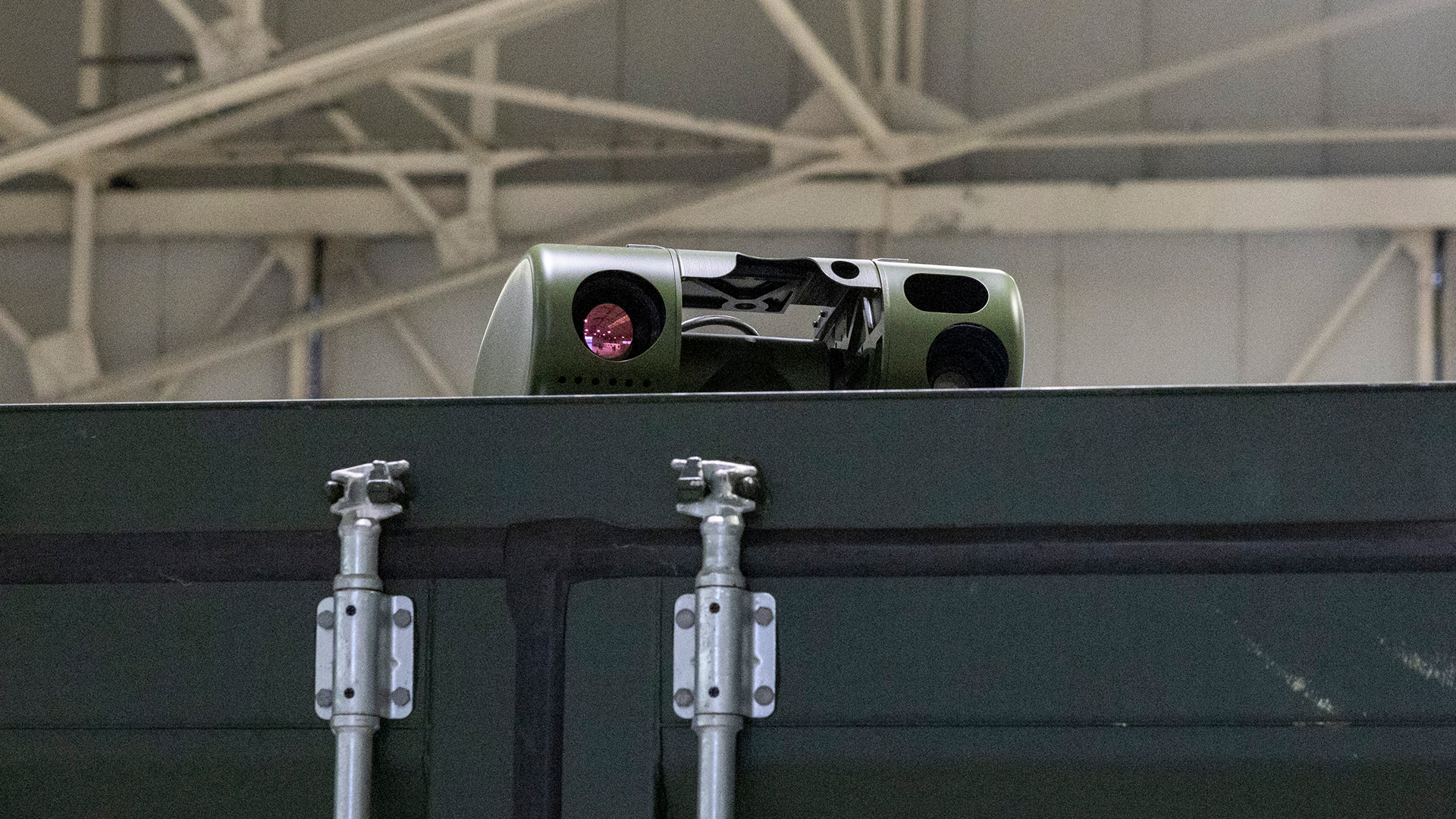
What British engineers have done is adapt these R-73s so they can be fired from a ground-based system instead.
On top of the container is a camera system that uses passive IR to locate a target.
An image from the camera is sent to a command module, about the size of a large Peli case, which shows the target and then locks on before the missiles are fired. All the system needs to track a target is a heat signature.
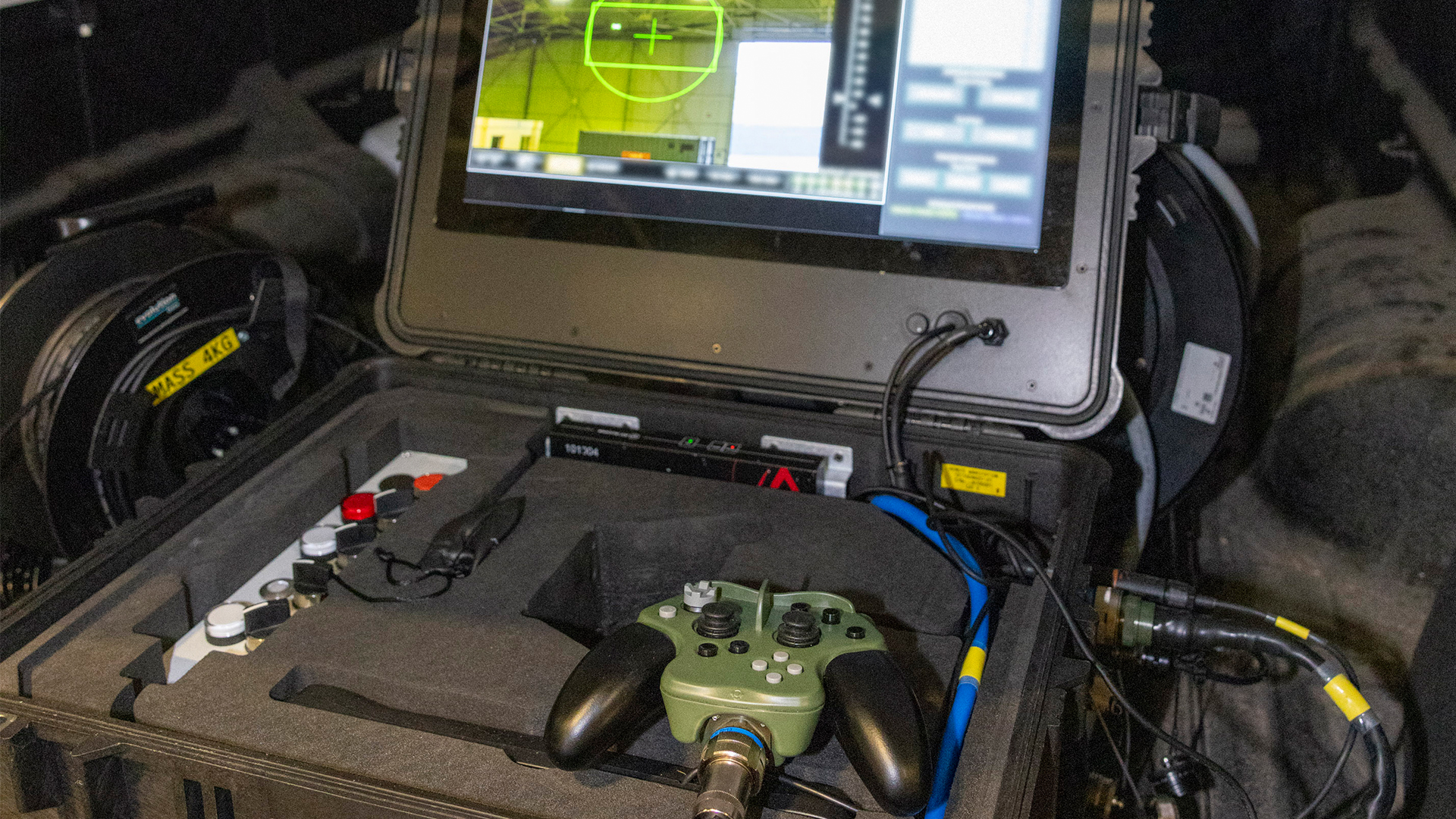
Gravehawk is designed to shoot down large drones such as the Iranian-supplied Shahed, as well as Russian aircraft and missiles.
The use of IR also means the system itself doesn't emit a radar signal so it's less vulnerable to being detected.
Gravehawk took less than a year-and-a-half to develop at a cost of £6m.
It was developed by a small team at the MOD called Taskforce Kindred, which oversees the supply of UK weapons and equipment to Ukraine. A number of UK defence firms were involved, but who they were is classified.
So far two systems are in use with the Ukrainian military – and the MOD says they've already been used successfully on the frontline.
A further 15 of these are due to be delivered to Kyiv this financial year. Each Gravehawk system costs around £1m, with Denmark paying half the cost.
The R-73 has proved its worth to Ukraine in other ways too – this was the same missile that the Ukrainians attached to a marine drone in December and used to shoot down a Russian helicopter over the Black Sea.
The Ukrainians initially didn't want Gravehawk, instead they wanted more air-to-air missiles and F-16 Fighting Falcons.
But having seen it in action they are now apparently sold on it – and want lots more.
